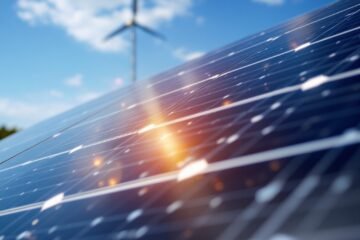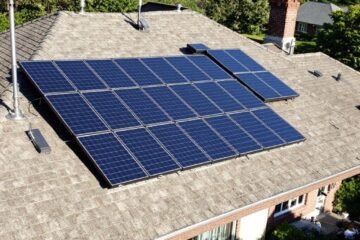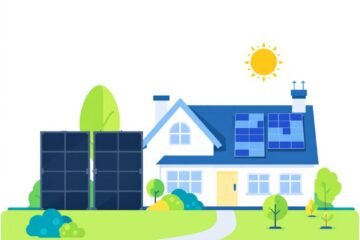Renewable energy refers to energy sources that are replenished naturally and can be used indefinitely, unlike non-renewable energy sources such as fossil fuels, which are finite and will eventually run out. The energy generated from these sources does not cause pollution or emit harmful greenhouse gases, which is considered sustainable and environmentally friendly. These sources harness natural processes and resources, such as the sun, wind, water, and heat from the Earth, to produce electricity and heat without depleting the resource.
There are Several Types of Renewable Energy Sources
Solar Energy
Wind Energy
Hydroelectric Energy
Geothermal Energy
Biomass Energy
Hydrokinetic Energy
Ocean Thermal Energy
Renewable Energy Subtypes
Subtypes refer to different forms or variations of a particular type of energy source. These subtypes may vary in terms of the technology used, the resources they harness, the scale of the energy generation, or the specific application they are used for. Subtypes within renewable energy can offer various options for users with varying technical and economic characteristics, making them suitable for different scenarios and locations.
SOLAR ENERGY SUBTYPES
As a renewable energy source, solar energy has several subtypes that make use of different technology and application:
Photovoltaic (PV) systems
Converts sunlight directly into electricity using semiconductor materials, such as silicon. These can be further divided into
- Crystalline Silicon (c-Si) PV cells are made of silicon wafers, either monocrystalline or polycrystalline.
- Thin Film PV cells, a layer of semiconductor material, such as amorphous silicon or cadmium telluride, is applied to a substrate, such as glass or metal.
Solar Thermal energy
It uses sunlight to heat a fluid that then generates electricity. This can be further divided into:
- Parabolic Troughs systems use parabolic mirrors to focus the sun’s energy onto a fluid-filled tube running through the focal point. The fluid is heated and then used to generate electricity.
- Power towers systems use a large field of flat mirrors called heliostats to focus the sun’s energy onto a receiver at the top of a tower. The receiver heats a fluid that then generates electricity.
- Solar dish systems use a parabolic dish to focus the sun’s energy onto a receiver that heats a fluid that generates electricity.
Concentrated Solar Power (CSP) systems
It uses mirrors or lenses to concentrate sunlight and generate heat, which is then used to produce electricity. This can be further divided into:
- Parabolic Trough CSP systems
- Power tower CSP systems
- Linear Fresnel Reflector (LFR) CSP systems
- Dish Stirling systems
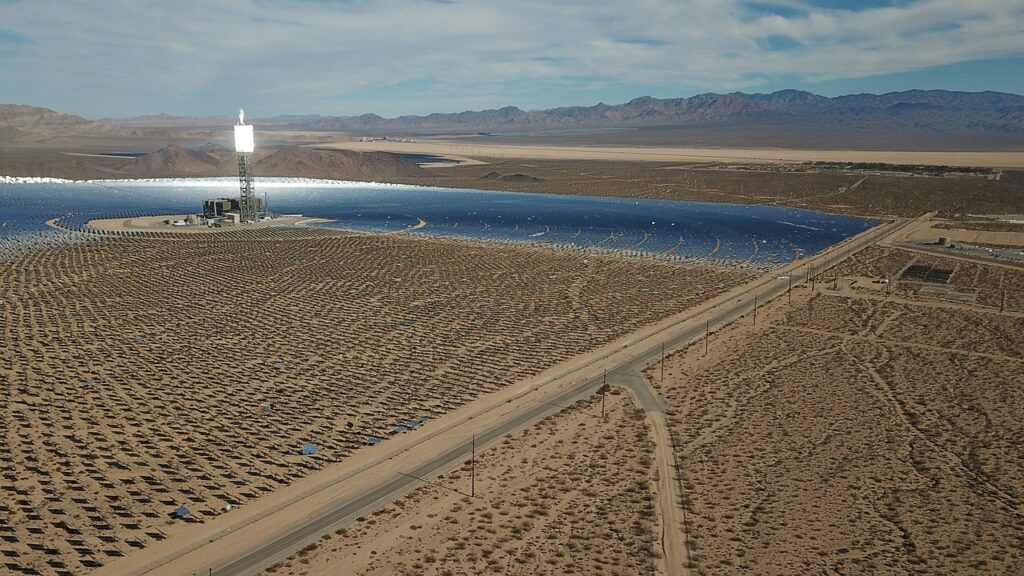
Building-Integrated Photovoltaics (BIPV)
This is a type of solar PV system where solar panels are integrated into the structure of a building, usually as part of the roof or façade.
Space-based solar power
This a proposed method to collect solar energy in space and transmit it to Earth using microwaves or laser beams.
WIND ENERGY SUBTYPES
Wind energy is a form of renewable energy that harnesses the power of the wind to generate electricity. Some subtypes of wind energy include:
Horizontal-axis wind turbines
This is the most common type of wind turbine, with blades that rotate parallel to the ground. These can be further divided into:
- Upwind turbines, where the blades rotate facing the wind
- Downwind turbines, the blades rotate facing away from the wind
Vertical-axis wind turbines
These turbines have blades that rotate perpendicular to the ground. There are different designs and subtypes within this group, such as:
- Darrieus turbine, an “eggbeater” shape turbine
- Savonius turbine, a “scoop” shape turbine
Onshore wind energy
These turbines are located on land, often in remote or rural areas.
Offshore wind energy
These turbines are located in the ocean, often in shallow waters near the coast. As a result, offshore wind turbines are generally larger and more powerful than onshore turbines and may face harsher weather conditions.
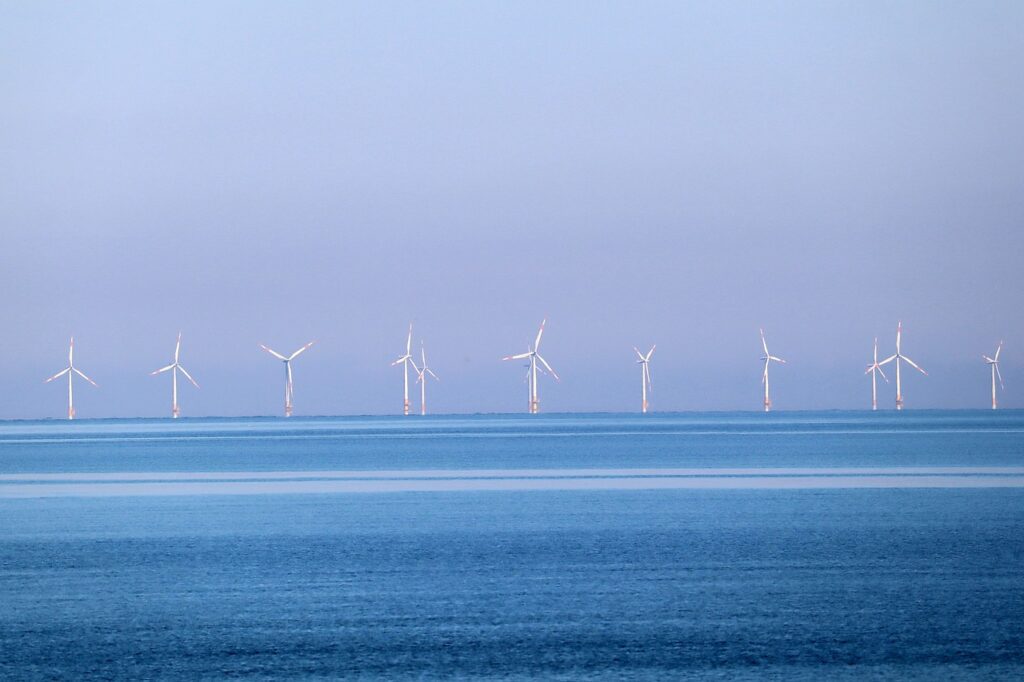
Micro-wind turbines
These are smaller turbines designed to produce electricity for a single building or small community. However, they are often used for residential and small commercial applications.
Wind Energy Kite Systems
These systems consist of kites or tethered wings that fly at high altitudes where the wind is stronger and more consistent and use the kinetic energy of the wing to generate electricity.
HYDROELECTRIC ENERGY SUBTYPES
Hydroelectric energy is a form of renewable energy that harnesses the kinetic energy of flowing water to generate electricity. Some subtypes of hydroelectric energy include:
Run-of-the-river hydroelectricity
This is generated by harnessing the energy of a river as it flows without impounding or diverting the water. It utilizes a river’s natural flow and elevation drop to generate electricity using a turbine.
Impoundment hydroelectricity
This is generated by building a dam across a river to create a reservoir, or lake, behind it. Water is then released through turbines to generate electricity. These can be further divided into:
- Storage dam, the water is held behind the dam and released as needed.
- Pumped-storage hydroelectricity, water is pumped from a lower reservoir to a higher reservoir when electricity demand is low and then released back to the lower reservoir through a turbine when electricity demand is high.
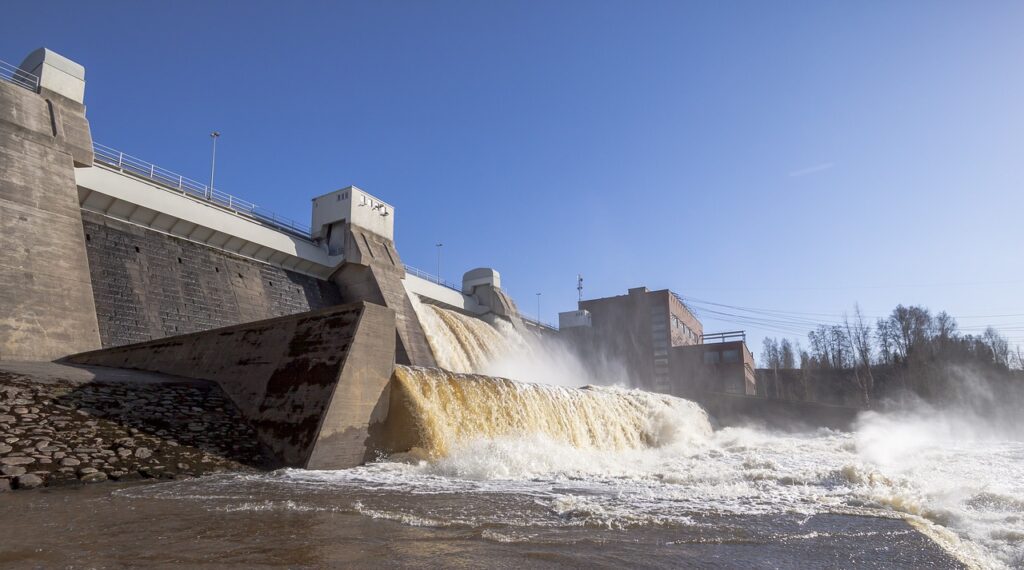
Micro hydroelectric systems
This small-scale hydroelectric system generates electricity for a single building or small community using a stream, waterfall, or man-made channel to drive a turbine.
Tidal energy
This form of hydroelectric energy harnesses the kinetic energy of the tides to generate electricity.
Wave energy
This form of hydroelectric energy harnesses the kinetic energy of ocean waves to generate electricity.
GEOTHERMAL ENERGY SUBTYPES
Geothermal energy is a form of renewable energy that harnesses the heat from the Earth’s interior to generate electricity. Some subtypes of geothermal energy include:
Dry Steam power plants
These plants use hot water or steam brought to the surface directly from a geothermal reservoir. The steam is used to turn a turbine, which generates electricity.
Flash steam power plants
These plants use water at high pressure and temperature, and when it reaches the surface, it rapidly boils and flashes into steam. The steam is used to turn a turbine and generate electricity.
Binary cycle power plants
These plants use a secondary fluid, such as an organic fluid, heated by the hot water from a geothermal reservoir. The heat causes the secondary fluid to vaporize and drive a turbine to generate electricity.
Enhanced geothermal systems (EGS)
These systems involve creating man-made reservoirs to access hot water and steam, using techniques such as hydraulic fracturing, injection, and horizontal drilling.
Direct Use of Geothermal
This includes using the heat from geothermal sources to heat buildings, greenhouses, and even swimming pools.
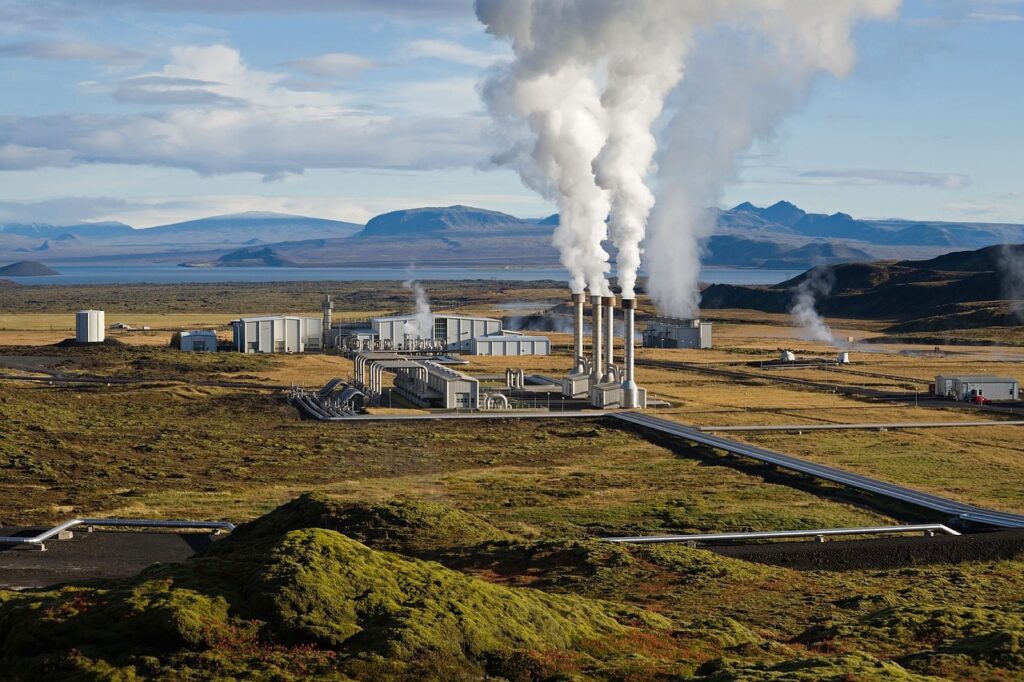
BIOMASS ENERGY SUBTYPES
Biomass energy is a form of renewable energy that harnesses the energy from organic matter to generate heat and electricity. Some subtypes of biomass energy include:
Biogas
This is generated by the anaerobic digestion of organic matter, such as food waste, agricultural waste, and sewage. Biogas can be used as heat, electricity, or transportation fuel.
Biofuels
These are liquid fuels from plant materials such as corn, soybeans, and sugarcane. These are used as a replacement for fossil fuels in transportation.
Biomass power
This is generated by burning plant material to produce steam, generating electricity.
Biomass waste-to-energy
This involves converting biomass waste, such as forestry and agricultural waste, into energy through combustion, gasification, or pyrolysis.
Wood pellets
Compressed sawdust and other plant waste can be used to fire power plants; this can also be considered a subtype of solid biofuel.
Torrefaction
Torrefaction is a heating process that removes moisture, volatile matter, and impurities from biomass and makes it more energy-dense and easier to transport; it also can be considered a subtype of solid biofuel.
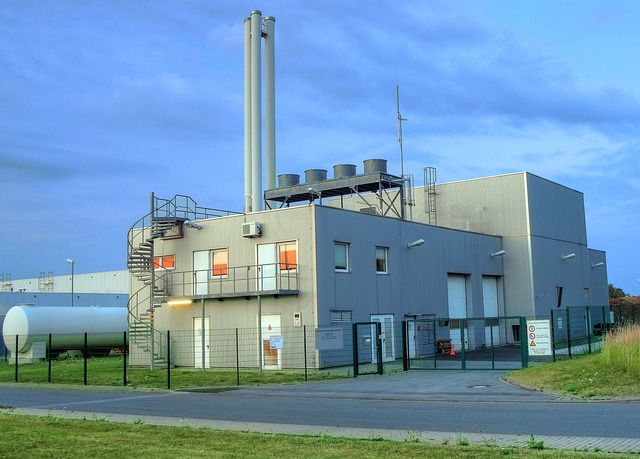
HYDROKINETIC ENERGY SUBTYPES
Hydrokinetic energy is a form of renewable energy that harnesses the kinetic energy of moving water, such as rivers, tides, and ocean currents, to generate electricity. Some subtypes of hydrokinetic energy include:
Tidal energy
Tidal energy is a form of hydropower that harnesses the kinetic energy of the tides to generate electricity. The most common subtypes of tidal energy are:
- Tidal stream energy: This is generated by turbines placed in the tidal current and looks similar to wind turbines, except they are designed to operate underwater. Tidal stream energy can be generated in both onshore and offshore locations.
- Tidal barrage energy: This is generated by building a dam across a bay or estuary and using the rise and fall of the tides to drive turbines, similar to how hydroelectric dams use the flow of rivers to generate electricity.
- Tidal lagoon energy: This is generated by creating a man-made lagoon or basin connected to the sea and using the tidal flow to drive turbines.
- Tidal fences energy: This is generated by an array of turbines that are placed in a line perpendicular to the tidal flow, similar to a fence, and they capture the kinetic energy of the tidal flow using horizontal-axis turbines
River energy
This is generated by turbines placed in rivers to harness the kinetic energy of the flowing water to generate electricity.
Ocean current energy
This harnesses the energy of ocean currents to generate electricity. Ocean currents, such as the Gulf Stream and the Kuroshio Current, are caused by the interaction of the sun, wind, and the Earth’s rotation and can be harnessed to generate significant amounts of electricity. Here are some examples of subtypes of ocean current energy:
- Submerged Turbines: These systems are turbines entirely submerged in the ocean current, typically anchored to the ocean floor and driven by ocean currents to generate electricity.
- Dynamic Legged Tidal Stream Generator: This system uses a semi-submerged platform supported by legs and buoyancy tanks, which move with the ocean current to drive a turbine.
Wave energy
Wave energy is a form of renewable energy that harnesses the kinetic energy of ocean waves to generate electricity. Some subtypes of wave energy include:
- Point absorber: This wave energy device is typically a buoy that moves with the waves, causing a generator to produce electricity.
- Oscillating Water Column (OWC): This type of device consists of a chamber open to the sea that is partly filled and emptied by the waves, causing air to move in and out of a turbine, generating electricity.
- Overtopping device: This type of device is typically a floating or submerged platform that collects water as waves push it up. It is then used to drive a turbine and generate electricity.
- Tapered Channel: This type of device typically gets narrower as it goes further inland. This causes the waves to get higher and higher as they move in, creating a head difference that can drive a turbine.
- Terminal Devices: this type of device is anchored to the seabed, and as the waves approach, they move up and down or back and forth; this movement is converted into electricity.
Salinity gradient energy
Salinity gradient energy, also known as osmotic power, harnesses the energy from the difference in salt concentration between seawater and freshwater to generate electricity. Some of the subtypes for salinity gradient energy include:
- Reverse electrodialysis (RED): This technology uses a stack of ion-exchange membranes to generate electricity from the salinity gradient between seawater and freshwater.
- Pressure-retarded osmosis (PRO): In this technology, seawater is forced through a semi-permeable membrane to generate electricity by the pressure difference created by the salinity gradient.
- Mediated electrodialysis (MedE): This technology generates electricity by using an electrical potential to drive ions through a membrane, creating an electric current.
- Capacitive mixing (CapMix): This technology generates electricity by using the salinity gradient to charge capacitors which can then be used to generate electricity.
- Osmotic power turbine: This technology generates electricity by using the difference in salt concentration to drive a turbine.
Underwater turbine systems
This subtype of Hydrokinetic energy uses underwater turbines driven by water flow, tides, and ocean currents, deployed on the seabed or close to the shore. Some subtypes include:
- Horizontal axis turbine: These systems use turbine blades similar to those found in wind turbines that are mounted horizontally and are oriented perpendicular to the flow of water.
- Vertical axis turbine: These systems use turbine blades that are mounted vertically and are oriented parallel to the flow of water.
- Archimedes screw turbine: These systems use a helical screw-like design to capture the kinetic energy of the water flow.
- Bulb turbine: These systems are shaped like a bulb and designed to rotate in the flow of water, similar to a traditional waterwheel.
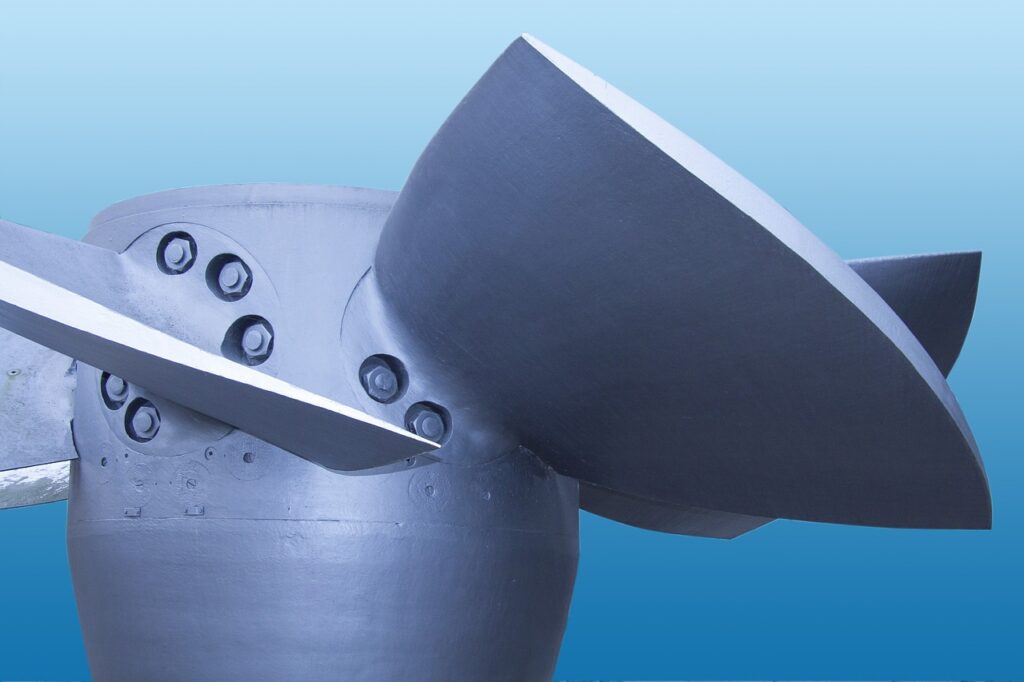
OCEAN THERMAL ENERGY SUBTYPES
Ocean thermal energy is a form of renewable energy that harnesses the temperature difference between warm surface water and cold deep water to generate electricity. Some subtypes of ocean thermal energy include:
Open-cycle ocean thermal energy conversion (OTEC)
This uses warm surface water to vaporize a working fluid, such as ammonia, which drives a turbine to generate electricity. Then, the vapor is cooled and condensed by the cold deep water, creating a closed-loop system.
Closed-cycle ocean thermal energy conversion (OTEC)
This uses a fluid with a low boiling point, such as propane, vaporized by the warm surface water and drives a turbine to generate electricity. The vapor is then condensed by a heat exchanger using cold deep water, creating a closed-loop system.
Hybrid ocean thermal energy conversion (OTEC)
This is a combination of open-cycle and closed-cycle OTEC systems, where the heat from the warm surface water vaporizes a working fluid, which then drives a turbine to generate electricity. The vapor is then cooled and condensed by the cold deep water, and some of the heat energy is also used to generate electricity using a closed-loop system.
Warm seawater-cooled condenser (WSCC) ocean thermal energy conversion (OTEC)
This system uses warm seawater from the ocean surface to cool the condenser in a closed-cycle OTEC system instead of cold deep seawater. This can make it more feasible to implement in locations where the temperature differential between the warm surface water and the deep water could be better.
Floating OTEC systems
This type of system uses a floating platform to house the entire OTEC plant, making it possible to be deployed in deep waters, providing a more consistent temperature difference between the surface and deep water.
Hybrid ocean thermal energy conversion systems
This type of system combines elements of the various subtypes of OTEC systems and can combine different energy conversion methods such as electrical, thermal, and desalination.
FAQ
Kinetic energy is the energy of motion and can be derived from various sources, including renewable and non-renewable sources. Some examples of renewable sources of kinetic energy include wind, flowing water in rivers and oceans, and waves. These sources of kinetic energy can be harnessed to generate electricity through technologies such as wind turbines, hydroelectric power plants, and wave energy converters. Additionally, kinetic energy from human and animal movement can be converted into electricity through kinetic energy harvesting devices. Therefore, kinetic energy can be considered renewable if it is derived from renewable sources and can be replenished naturally.
Tidal energy and wave energy are closely related, but they are different.
Tidal energy harnesses the power of the tides, which are caused by the gravitational pull of the Moon and the Sun on the Earth’s oceans. Tidal energy is generated by building a dam across a bay or estuary or placing turbines in the water with a strong tidal current.
Wave energy, on the other hand, harnesses the power of ocean waves caused by the wind blowing over the water’s surface. Wave energy is generated by placing devices, such as buoys or turbines, in the water with strong wave action.
Both types of energy use the kinetic energy of the moving water to generate electricity, but the energy sources are different. For example, tidal energy relies on the moon and the sun’s gravitational force, whereas wave energy depends on the wind.
Hydroelectric and hydrokinetic energy is not the same; they are different forms of energy generation.
Hydroelectric energy is a form of energy generation that uses the force of falling or fast-flowing water to turn turbines and generate electricity. Hydroelectric energy typically uses large dams, power plants built across rivers, or large canals designed explicitly for this purpose. The most common examples are hydropower plants using large reservoirs, also called impoundments, where water is collected behind a dam and then released through turbines to generate electricity.
Hydrokinetic energy is a form of energy generation that uses the kinetic energy of moving water, such as ocean waves, rivers, and tides, to generate electricity. Hydrokinetic energy doesn’t require large dams or reservoirs. Instead, it uses devices such as turbines or generators placed in or near the water, and the energy generation takes place by the movement of the water itself. It can be harnessed in rivers, ocean currents, waves, and tides.
In short, Hydroelectric energy uses the potential energy of water stored in a reservoir, and Hydrokinetic energy uses the kinetic energy of moving water.
It is unlikely that renewable energy sources will completely replace fossil fuels in the short term, as they are currently the primary energy source for many industries and applications. However, it is possible to significantly reduce our dependence on fossil fuels by increasing renewable energy sources. The exact replacement level will depend on many factors, such as technological advancements, cost-competitiveness, availability and accessibility of resources, policy and regulations, and energy demand. Nevertheless, there is a growing trend towards renewable energy sources, the growth of renewable energy capacity worldwide has been consistent over the past years, and the cost of renewable energy sources such as solar and wind have decreased significantly.
Determining if a renewable energy source is right for your home or business will depend on various factors, such as the resource’s availability, the technology’s cost, and the energy needs of your home or business. A good starting point is to assess your energy needs and understand your consumption patterns, evaluate the availability and reliability of the renewable energy resources in your area and compare the cost of the renewable energy source to traditional energy sources, including the initial installation cost, ongoing maintenance, and operating costs, and any incentives or rebates available. Next, research the different types of renewable energy technologies, and consult with a professional energy consultant to evaluate the feasibility and cost-effectiveness of a renewable energy system for your home or business.
There are several challenges to expanding the use of renewable energy:
1. While decreasing in recent years, the cost of renewable energy technologies can still be higher than traditional energy sources.
2. Reliable and cost-effective energy storage means are required to ensure a consistent power supply when renewable energy is unavailable.
3. Integrating renewable energy sources into the existing power grid can be complex and challenging.
4. Government policies and regulations vary across countries, making it challenging for companies to operate in different markets. Lack of long-term government support or inconsistent support can make it difficult for renewable energy projects to attract investment.
5. Access to finance is also a significant challenge, particularly for projects in developing countries or countries needing more renewable energy investment.
The cost of renewable energy has decreased significantly in recent years. It is now often competitive with fossil fuels, but it can still depend on the specific renewable energy source and location. For example, solar and wind energy have become increasingly cost-competitive with fossil fuels in many parts of the world, particularly when factoring in the cost of externalities, such as the health impacts of air pollution from fossil fuel use and carbon emissions. In contrast, other renewable energy sources, such as geothermal and hydroelectric energy, are generally cheaper than fossil fuels and more consistent in their power, but they can be more location dependent. The cost comparison between renewable energy and fossil fuels varies depending on the specific source and location, but it can often be a viable alternative.
Renewable energy sources, such as solar, wind, geothermal and hydroelectric, do not produce greenhouse gas emissions during operation and are considered low-carbon energy sources. Therefore, using renewable energy reduces the demand for fossil fuels. It, thus, helps mitigate the impacts of climate change by reducing the emissions of greenhouse gases and air pollutants, which significantly benefits the environment and public health.
RENEWABLE ENERGY FACTS
- According to the International Energy Agency (IEA), renewable energy sources, such as wind, solar, hydropower, and bioenergy, provided 26% of global power generation in 2019.
- According to the U.S. Energy Information Administration (EIA), in 2020, renewable energy sources (biomass, geothermal, hydropower, solar, wind) accounted for 11% of total U.S. utility-scale electricity generation, and wind and solar energy made up 8% of total utility-scale electricity generation.
- As of 2021, China has the highest installed solar energy capacity, followed by the United States, Japan, Germany, and Italy.
- According to the IEA, between 2015 and 2019, wind power generation’s average annual growth rate was 13%, while solar power generation grew by 20% per year.
- According to the IEA, by 2030, renewable energy is projected to provide up to 40% of global electricity; by 2050, renewable energy will provide up to 90% of global electricity.
**Check the websites of the IEA and EIA for the most up-to-date reports
